By Eric Vandenbroeck and co-workers
After the Quake
Bangkok ground to a
halt on March 28 after a strong earthquake shook the clogged Thai capital, causing
chaos and triggering city-wide evacuations that left many thousands of people
stranded for much of the day.
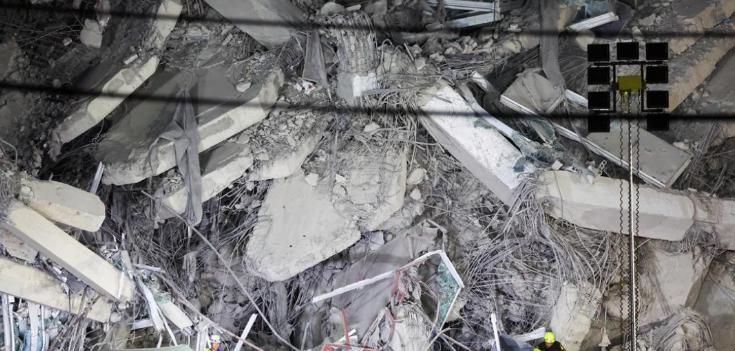
All urban rail
systems were suspended, and roads were gridlocked across one of Asia's biggest
cities after the quake in neighboring Myanmar caused
tremors up to a magnitude of 7.1 in Bangkok, about 1,020km from
the epicenter of the earthquake.
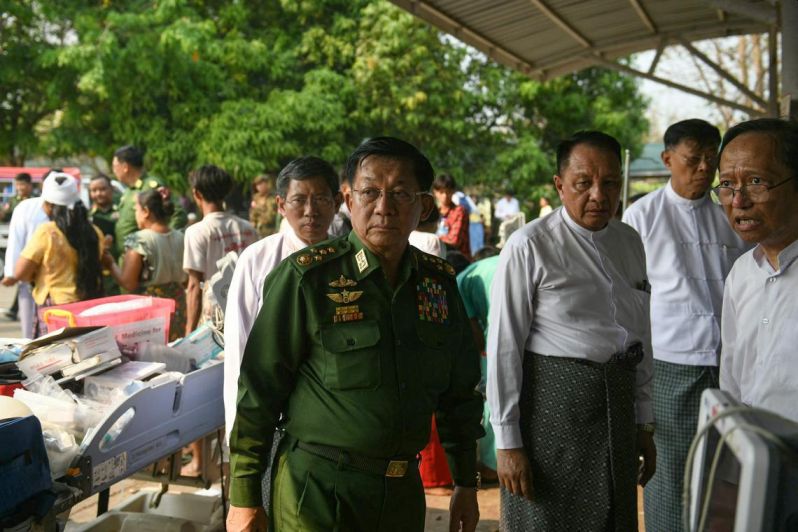
Myanmar’s military
chief Min Aung Hlaing (in green) arrived to meet earthquake survivors gathered
in the compound of a hospital in Naypyitaw on March 28.
The quake killed nine
people in Bangkok, including eight laborers who died after the collapse of a
33-story building that was under construction. Rescuers with dogs searched for
signs of life, with more than 100 missing at the site, the authorities said.
The 7.7-magnitude
tremor hit northwest of the city of Sagaing at a
shallow depth around lunchtime, the United States Geological Survey (USGS)
said. A 6.4-magnitude aftershock hit the same area
minutes later.
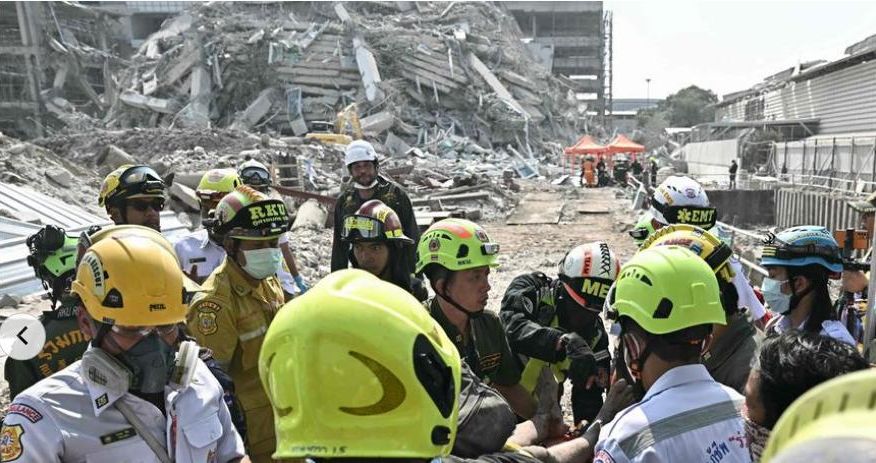
Earlier in the day,
at least 20 people were confirmed dead at a 1,000-bed hospital in Naypyitaw.
The rare plea from
the junta raises the prospect that damage and casualties may be on a large
scale, with Myanmar’s medical system and infrastructure ravaged by four years
of civil war.
A US government
predictive analysis based on the strength and depth of the earthquake estimated
there could be between 10,000 and 100,000 deaths and severe economic loss, with
the Sagaing and Meiktila regions worst hit.
In Mandalay,
Myanmar’s second-largest city, bleeding victims were rushed to the hospital by
ambulance, car, and motorbike.
Buildings were left
in ruins, and a doctor at Mandalay General Hospital said so many people arrived
for treatment that nurses ran out of cotton swabs, and he had no place to
stand.
At least three people
were killed in Taungoo city, in Myanmar’s Bago region, when a mosque partially
collapsed, witnesses said, while local media reported that two people died and
20 were injured after a hotel collapsed in Aung Ban town, in Shan state.

In
Bangkok, a 30-story building under construction collapsed.
At least nine people
were killed, and dozens of workers were rescued from under the rubble of the
skyscraper, Thai Deputy Prime Minister Phumtham Wechayachai said.
Rescuers were seeking
to free 81 more people still trapped in the building’s ruins.
The massive building
intended for government offices was reduced to a tangle of rubble and twisted
metal in seconds, footage shared on social media showed.
The Yangon Times
reported that the air traffic control tower at the airport in Naypyitaw
collapsed, killing everyone inside.
Several ministry
buildings in Naypyitaw, including those housing the Foreign Ministry and the
Ministry of Labor, likewise collapsed, killing many, including the permanent
secretary of the Ministry of Labor, according to the newspaper.
A team of journalists
was at the National Museum in Naypyitaw when the earthquake struck. Pieces fell
from the ceiling as the building began shaking. Uniformed staff ran outside,
some trembling and tearful, others grabbing cell phones to try to contact loved
ones.
Roads nearby were
buckled and broken by the tremors, and the route to one of the city’s biggest
hospitals was jammed with traffic.
The hospital was a
“mass casualty area” after the quake, officials said.
An ambulance made its
way between vehicles, with a paramedic shouting, “Cars, move aside so the
ambulance can get through”.
At the hospital, the
wounded were being treated in the street outside, intravenous drips hanging
from their gurneys.
Some writhed in pain,
while others lay still as relatives sought to comfort them.
As night fell,
journalists saw rescuers trying to extract a mother and son from the ruins of a
collapsed building in Naypyitaw.
Both were seriously
injured, but rescuers were unable to reach them, a Red Cross.
The tremors sent
people across Myanmar and Thailand into the streets.
“I heard it, and I
was sleeping in the house. I ran as far as I could in my pajamas out of the
building,” said a resident of the popular northern Thailand tourist city of
Chiang Mai.
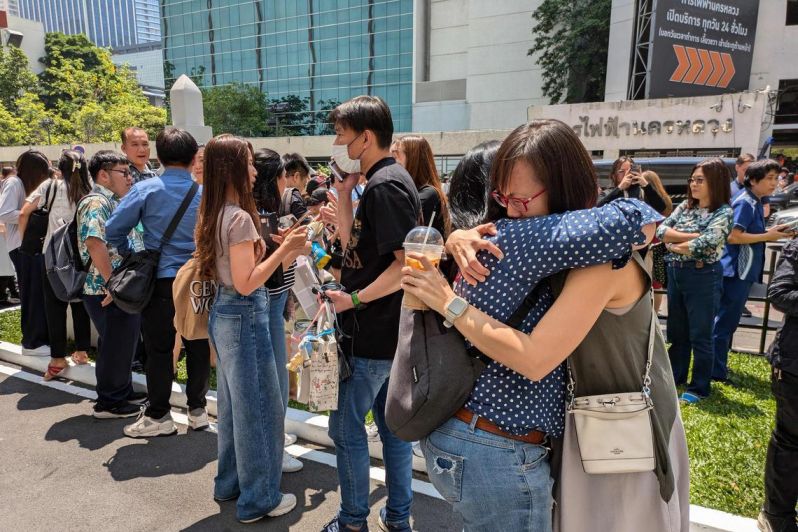
People gathered outside an office building in Bangkok
on March 28 after the earthquake.
Social media posts
from Mandalay showed collapsed buildings and debris strewn across the city’s
streets.
One witness in the
city told Reuters: “We all ran out of the house as everything started shaking.
I witnessed a five-story building collapse before my eyes. Everyone in my town
is out on the road, and no one dares to go back inside buildings.”
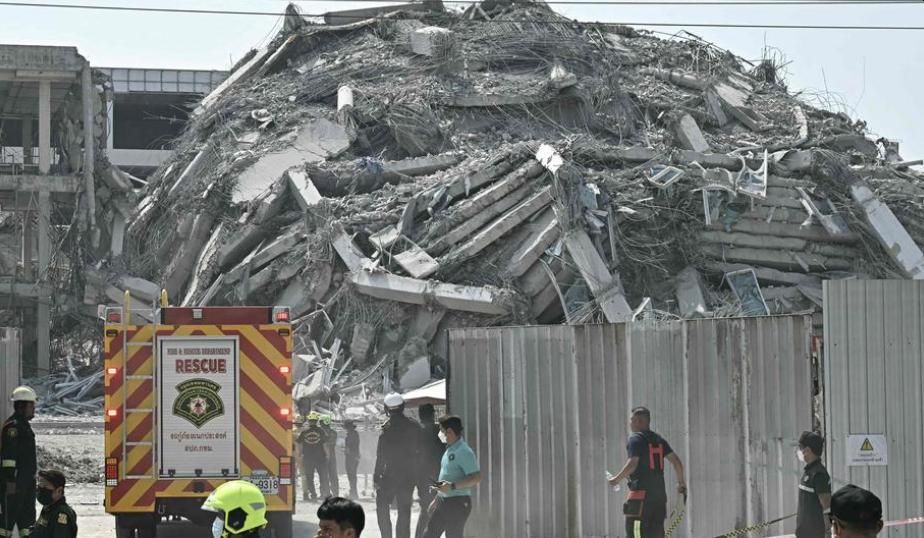
The quake forced the
suspension of some metro and light rail services in Bangkok, where Thai Prime
Minister Paetongtarn Shinawatra was reported to have declared a state of
emergency.
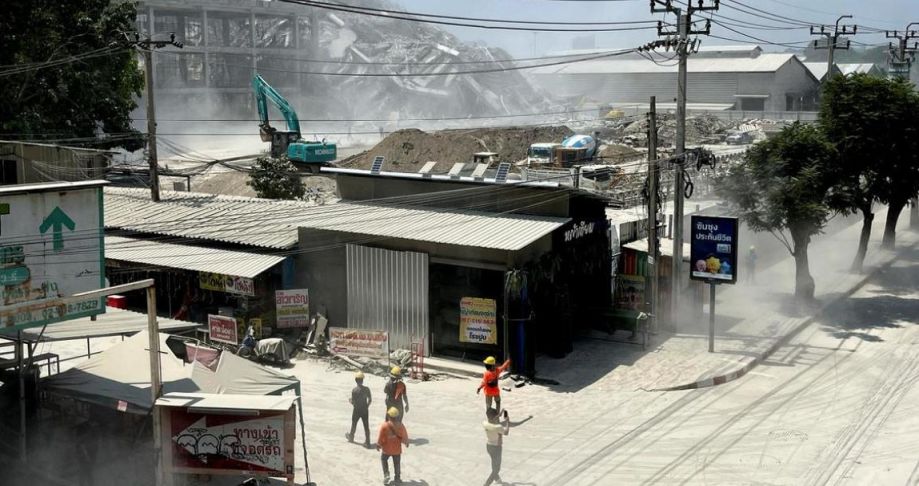
In Hanoi, Vietnam,
hundreds of people rushed out of high-rise buildings after feeling the tremors.
The chandeliers were
swinging strongly,” said Vy Nguyen, who works in an office building in
central Ho Chi Minh City. She said it sounded as though the windows were
cracking.
“One of my guests
crawled under the table while I remained standing. I am still feeling dizzy
now,” she said.
Tremors were also
felt in Penang, Malaysia.
“I was in the middle
of typing an article when I unexpectedly experienced vertigo. At first, I
thought I was feeling dizzy as it only lasted a few seconds, so I continued
working,” said Bulletin Mutiara writer M. Thanushalini,
38.
“It was only later,
after learning about the earthquake, that I connected the dots,” she said.
Penang Economic
Planning Unit assistant secretary Zeulqarnain Wahid,
33, said she also felt her building swaying.
“The Hari Raya
decorative lights in our office began to sway, and I felt light-headed. Several
colleagues also mentioned feeling the same, and we realized it was unusual,”
she said.
Seismic waves reached as far as China, Cambodia,
Bangladesh and India.
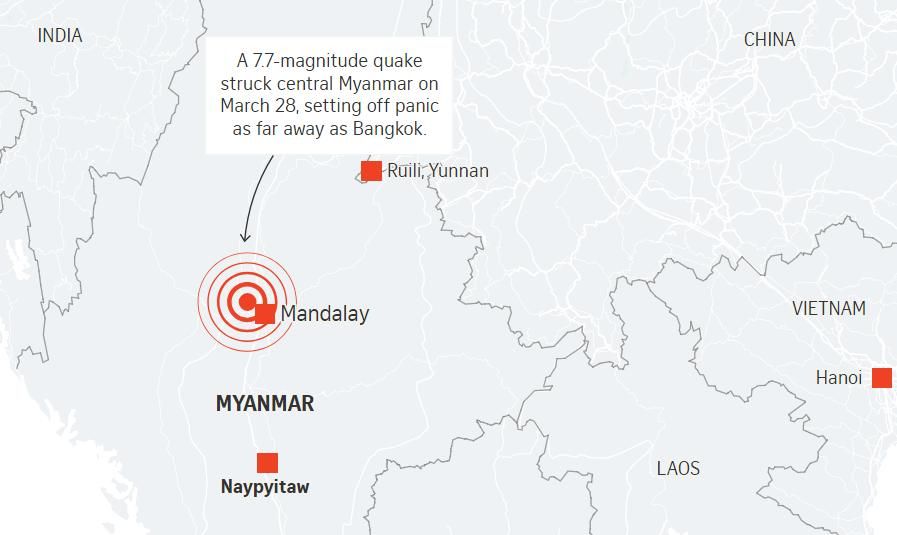
A live-stream
broadcast by the state-linked Beijing News showed around a dozen emergency
workers in orange jumpsuits and helmets on a street strewn with fallen masonry
in the city of Ruili, at the Chinese border with
Myanmar.
A shop worker
interviewed on the live stream showed phone footage of people running out of
stores with their hands over their heads as tremors swept through the street.
A video posted on
Douyin, the Chinese version of TikTok, showed a torrent of water and debris
cascading from the roof of a high-rise block in Ruili
as people fled through a street market below.
Earthquakes are
relatively common in Myanmar, where six strong quakes of 7 magnitude or more
struck between 1930 and 1956 near the Sagaing Fault,
which runs north to south through the center of the country, according to the
USGS.
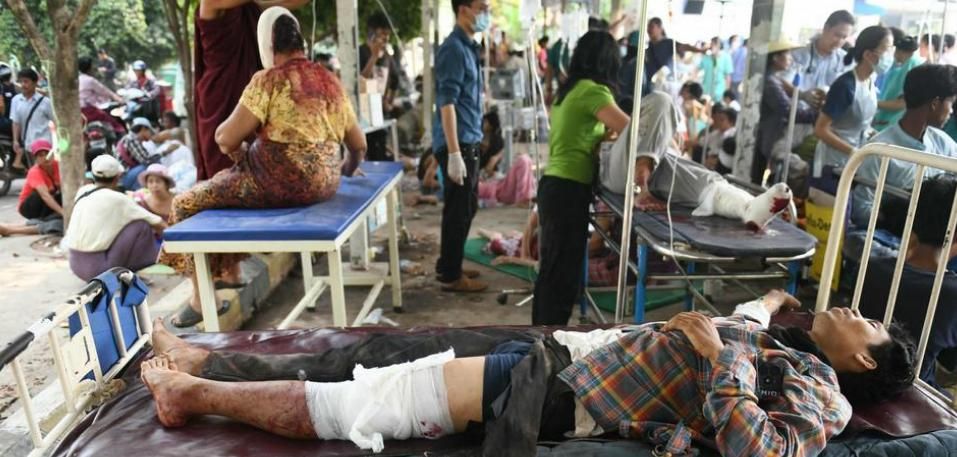
A powerful
6.8-magnitude earthquake in the ancient capital Bagan in central Myanmar killed
three people in 2016, also toppling spires and crumbling temple walls at the
tourist destination.
The breakneck pace of
development in Myanmar’s cities, combined with crumbling infrastructure and
poor urban planning, has also made the country’s most populous areas vulnerable
to earthquakes and other disasters, experts say.
The impoverished
South-east Asian nation has a strained medical system, especially in its rural
states.
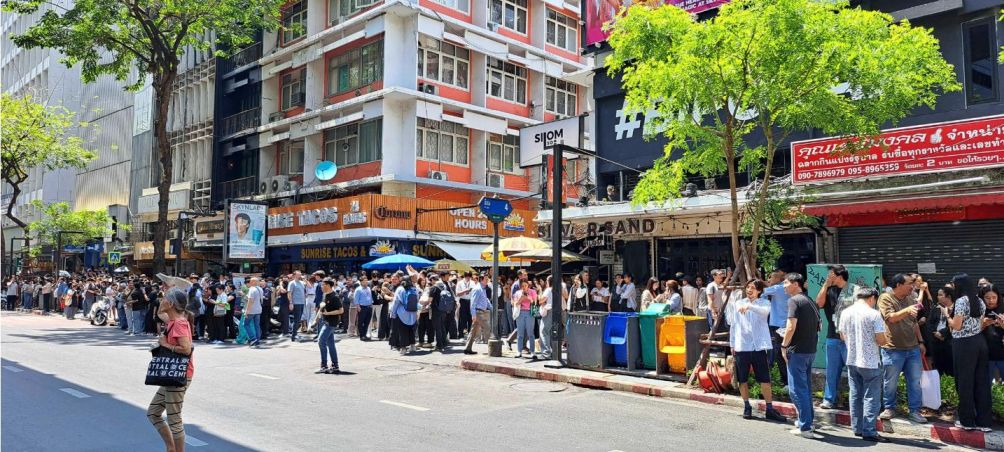
People who evacuated
from buildings following earthquake in Bangkok, Thailand, Friday, March 28,
2025. (AP Photo/Chutima Lalit)
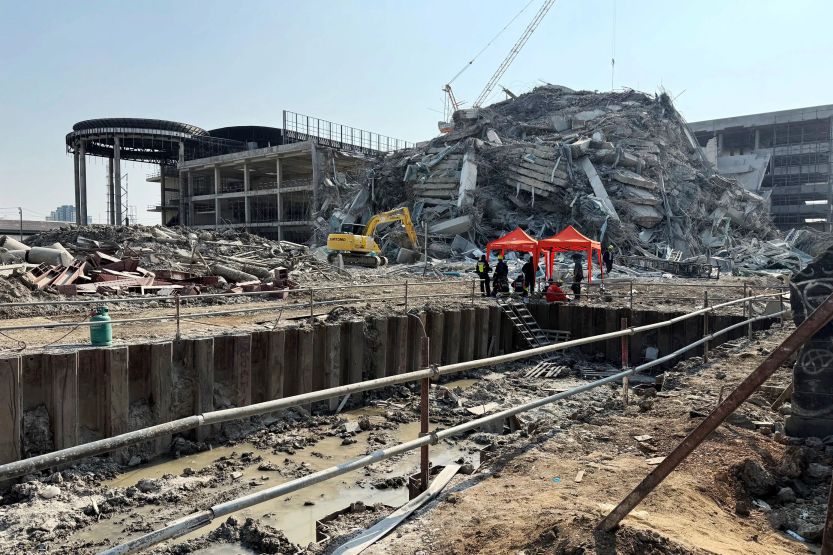
Rescuers walk at the
site of a high-rise building under construction that collapsed after a 7.7
magnitude earthquake in Bangkok, Thailand, Friday, March 28, 2025. (AP
Photo/Sakchai Lalit)
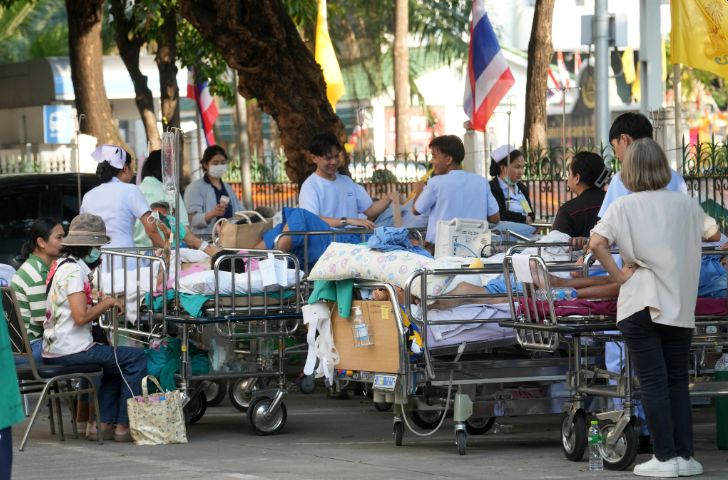
Hospital patients lay
on beds outdoors after a 7.7 magnitude earthquake in Bangkok, Thailand, Friday,
March 28, 2025. (AP Photo/Sakchai
Lalit)
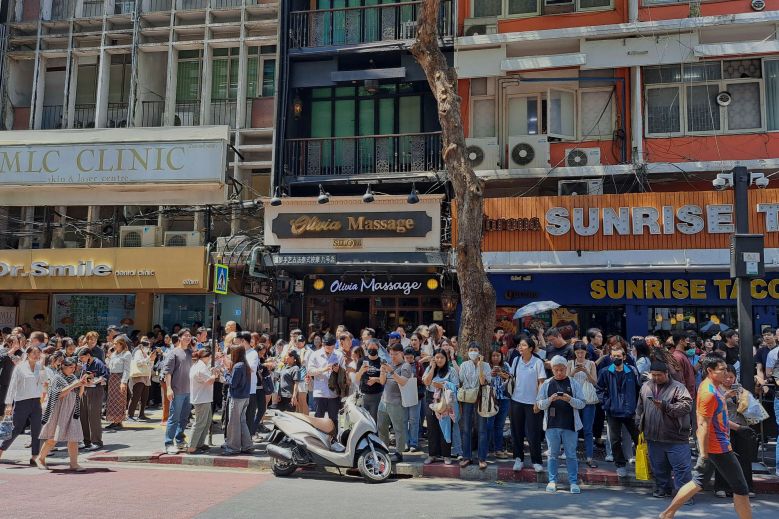
People who evacuated
from buildings following earthquake in Bangkok, Thailand, Friday, March 28,
2025. (AP Photo/Chutima Lalit)
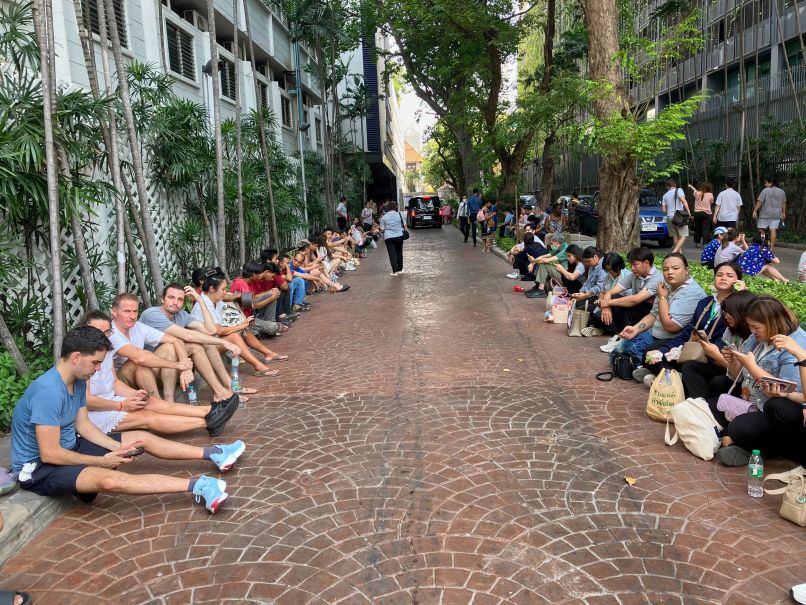
People wait to be told
it is safe to go back inside the Sathorn Gardens condominium building after an
earthquake in Bangkok on Friday, March 28, 2025.
For updates click hompage here